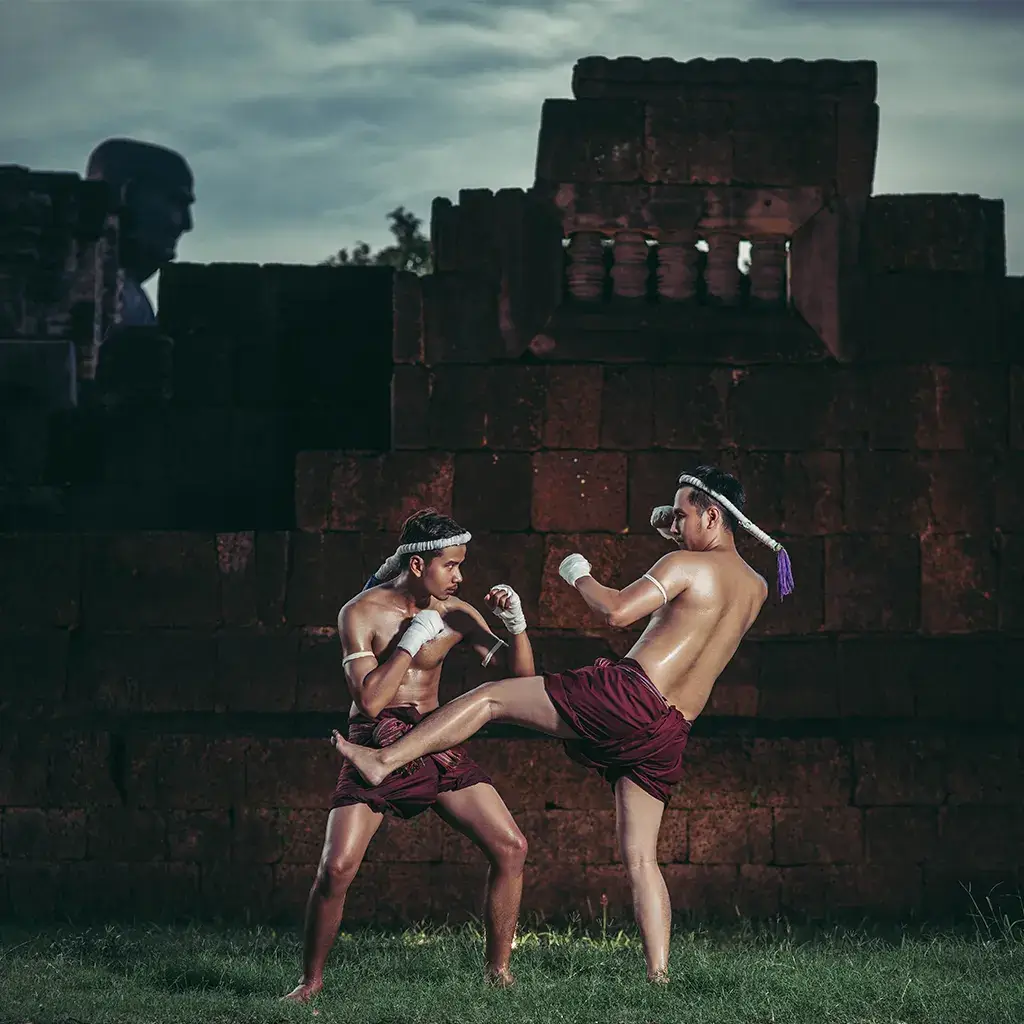In This Blog
Mixed martial arts training can be traced back throughout history, beginning with our ancient ancestors. Numerous ancient cultures developed their own fighting systems composed of striking, wrestling, and self-defence skills. These were the building blocks of what we call mixed martial arts history.
In ancient Greece, there was a sport called pankration that was a combination of boxing and wrestling. Pankration became part of the Olympic Games and illustrated the efficacy of martial arts that brought together various techniques. In Asia, forms such as kung fu, jujutsu, and karate added a new approach to training and discipline. Each culture brought its unique contributions that would ultimately guide the way to MMA.
Today, MMA fighters train in school, learning striking, grappling, and fitness with expert coaches. The MMA training is safer, clearer, organised, and guided by sports science principles. Mixed martial arts has grown from survival and entertainment into a global sport built on skill, respect, and discipline.
The Origins of MMA
MMA is a very old concept. The first known example would be pankration. They created a sport combining boxing and wrestling, which became an Olympic event in 648 BC. Pankration was harsher than boxing and proved that combining skills made fighting more effective.
Different martial arts continued to develop, and they contributed new ideas to the methodology of fighting. For example, judo was functioning on throws, joint locks, and ground control. In karate, we were training fighters in fast and precise striking using hands and feet. Muay Thai was becoming recognisable to the rest of the world with the use of elbows and knees, and explosive kicking. Kung fu trains self-defence while teaching discipline, respect, cultural values, and philosophy. Martial arts train both body and mind, and were instrumental in the development of mixed martial arts.
In the 20th century, an unregulated form of combat entered the world, known as Vale Tudo. Vale Tudo combat sport included virtually any technique and encouraged fighters to push their limits. Around the same time, the Gracie family was developing another, more restricted system of jiu-jitsu. The Gracie family showed through open challenges that ground techniques could beat stronger opponents. Ultimately, this changed people’s perceptions of what was possible in combat and the way we consider what should be taught.
Pankration, Asian martial arts, Vale Tudo, and the Gracie family’s lessons were not MMA on their own, but each significantly contributed to the development of it. These traditions existed long before modern schools and gave momentum to what is now recognised as a sport.
MMA History Timeline
The path of MMA to being a more recent sport started with the Gracie Challenge of the 20th century. The Gracie family hosted fighters from various martial arts to showcase their skills. They had established that their method of ground fighting could defeat opponents who were stronger and heavier. These challenges ignited interest, and quickly, people saw the excitement in a cross-style competition.
Then, in 1993, the first UFC event happened. Fighters from boxing, wrestling, jiu-jitsu, karate, and more were fighting together. Documentary-style films called “UFC” were released with a very limited number of rules. Some of the matches were very violent, and a lot of people perceived them as unsafe. However, the exhibitions allowed a demonstration of the opportunities for mixing different techniques rather than just using one style.
Later on, there was a transition towards a safer and more structured sport, and the Unified Rules of Mixed Martial Arts were enacted. The Unified Rules established weight class limits, added control with round limits, and eliminated dangerous moves able to be taken. The transition to a regulated event brought control to fights and allowed MMA to be taken seriously.
By the early 2000s, the sport was widely accepted. The UFC was growing quickly, and MMA had fans all over the world. MMA history shows how it grew from small challenges to a global sport shaped by tradition and modern rules.
Evolution of MMA Schools
The progression of MMA schools reveals how training spaces have evolved throughout history. In the earlier days, fighters would train in dojos and small fight clubs that concentrated on one discipline. Aspiring fighters had to visit different schools to learn new skills and improve.
As MMA evolved, the concept of cross-training became a focal point in preparation. Fighters would train in all aspects in one training cycle. This led to the modern MMA school, where fighters can train in all areas under one roof.
Today, MMA schools are basically super training facilities. They are a blend of martial arts, sports science, and technology. Nowadays, fighters have access to strength and conditioning programmes, video analysis, recovery systems, and nutrition plans. This combination of traditional skill and modern science has helped elevate MMA training to the best level it can be.
The Role of the UFC & Mainstream Adoption
The UFC has really had a huge impact on MMA by taking it mainstream. It did this very quickly, in part due to Dana White’s leadership of the organisation. What started as some local, small competitions was now a sport with a professional umbrella, huge online presence, and international reach.
With the reality show The Ultimate Fighter, millions were introduced to MMA. They could see the fighters’ training, fights, lives, discipline, and shortcomings. Fans were able to see the athletes preparing for the fights, which made it even more relatable.
As the UFC grew in popularity, schools, training styles, and methods to train were happening all over the globe. Fighters studied UFC athletes’ techniques, learning striking, grappling, and conditioning. These sessions were often textbook combinations of those elements, and encouraged sharing ideas globally with professionals to further improve their training.
The UFC just didn’t bring MMA to a new level in entertainment, but gave way to innovation in training as well. Schools were able to incorporate and employ modern sports science, video analysis, and recovery methods to optimise fighter training. Coaches started balancing volume-based mixed training, nutrition and mental preparation phases. The contribution to these fighters’ fitness, strength, skills and speed was substantial and continuous.
Every day and weekend, the UFC is entertaining millions and shaping the school, training systems and experiences for fighters. The UFC shaped a system that combines traditional martial arts with modern scientific training, influencing all of MMA.
Modern MMA Training
Modern MMA training includes a variety of elements to prepare a fighter for every aspect of fighting. Training sessions involve both striking and grappling as part of every session.
Strength and conditioning are also important. Fighters will focus on developing power, speed, endurance and agility with the aim to perform at a high level for the duration of a match. Many schools also offer elements of conditioning designed specifically for MMA practice. They will allow newcomers to learn elements of technique progressively, and many academies will systematically provide these for both novices and advanced students.
Psychology and mental training are also crucial in mixed martial arts classes, and fighters learn to be attentive, perform under pressure, and remain confident. Often, mental preparation will be a separator between those who excel and those who alternate between levels of proficiency
Nutrition is also an important factor. Eating a balanced diet allows for sustained performance, recovery, and maintenance of a selected weight category. Who eats what and when is often carefully planned and is part of a larger impetus to fuel training and enhance performance.
Recovery is critical to prevent injuries and to recover performance. Recovery, for example, may involve stretching, physiotherapy, ice baths, or proper rest. Academies that will service these types of activities will marry old practices of martial arts with current scientifically supported movements to improve recovery and performance.
MMA training, today, combines traditional martial arts practice with a science-based approach. From beginners to professionals, this approach builds skill and strength for modern MMA.
What’s Next for MMA Training
MMA training has evolved from traditional combat styles to modern schools. It combines striking, grappling, conditioning, mental training, and recovery. Fighters now use global techniques, science-based methods, and structured programs to build fitness, skill, and confidence.
Chi Holistic Academy provides expert coaching and MMA classes in Croydon. We also offer training for anyone who wants to learn self-defence in Croydon. Our programs help students build skill, strength, and confidence, whether for fitness, self-defence, or professional development.


